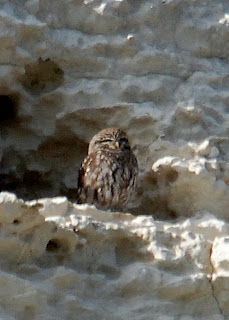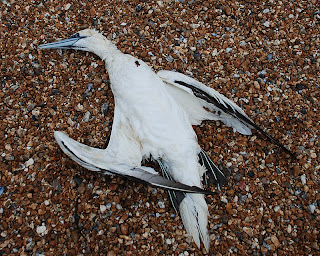After the hectic week in Norfolk it was back to the patch on monday,with an after lunch stroll around Langdon cliffs,nothing much to report from there,but a call from Steve Ray had me scurrying down to the Prince of Wales pier where he had seen a GREY PHALAROPE,it was not immediately evident when I got there,but it soon appeared again ,I had forgotten how small they are,superficially like a tiny black headed gull,it was in the shadow of the pier picking morsels of food from the surface.The birds breed in Iceland and spend the winter at sea off the coast of west Africa.
GREY PHALAROPE
GREY PHALAROPE is also known as RED PHALAROPE as in breeding plumage it becomes a deep terracotta red.
A single PURPLE SANDPIPER was also found on the beach opposite the Gateway flats,this bird also breeds in Iceland and other Arctic regions,it spends the winter in small groups feeding amongst rocks and seaweed covered surfaces,there used to be a group that regularly wintered on the hoverpad but this has diminished over the last few years,now preferring the new rock sea defences at Hythe.
PURPLE SANDPIPER.
A few bits and pieces from Tuesday at Samphire Hoe;
PIED WAGTAIL resting on the wall.
WHEATEAR migration has slowed to a trickle now.
ROCK PIPIT numbers are building up,can reach 30-40 birds in the winter.
GOLDFINCH flocks have been on the move recently foraging on teasles and thistles.
The troglodyte LITTLE OWL has returned to its cave on the cliffs.
A less pleasing find on the beach near the clock tower today was a dead gannet,there was no obvious injury so it may have died of starvation,but that is not certain.
This gannets 6 foot wing span will never take to the air again.
The gannets large webbed feet are lined with pale green ribs,something you rarely see.
The more I look at this poor beast it does look quite emaciated but that may be because it was very wet.












I like the piece in the local rag, they done well with the pics and getting the names right!!
ReplyDelete